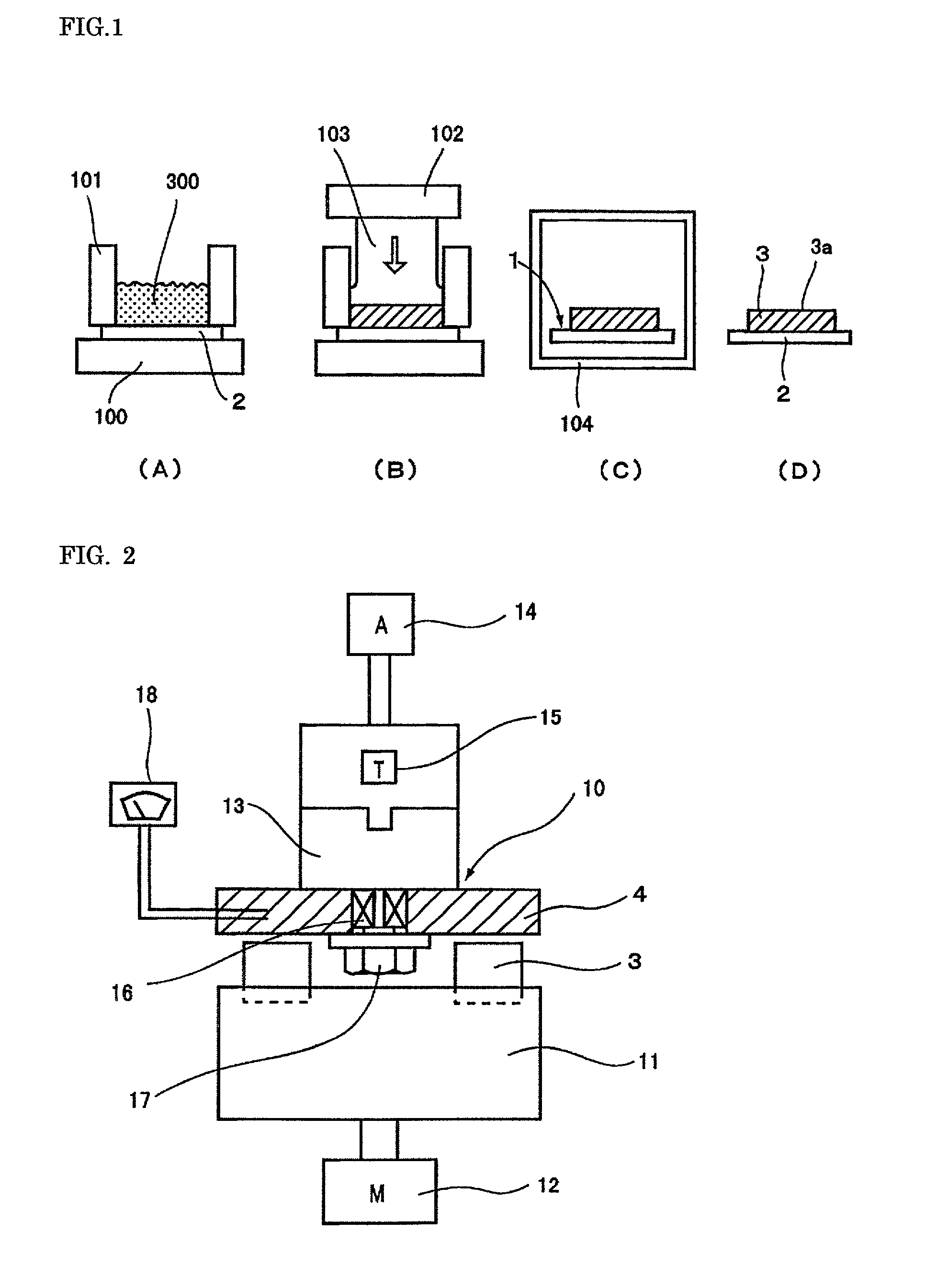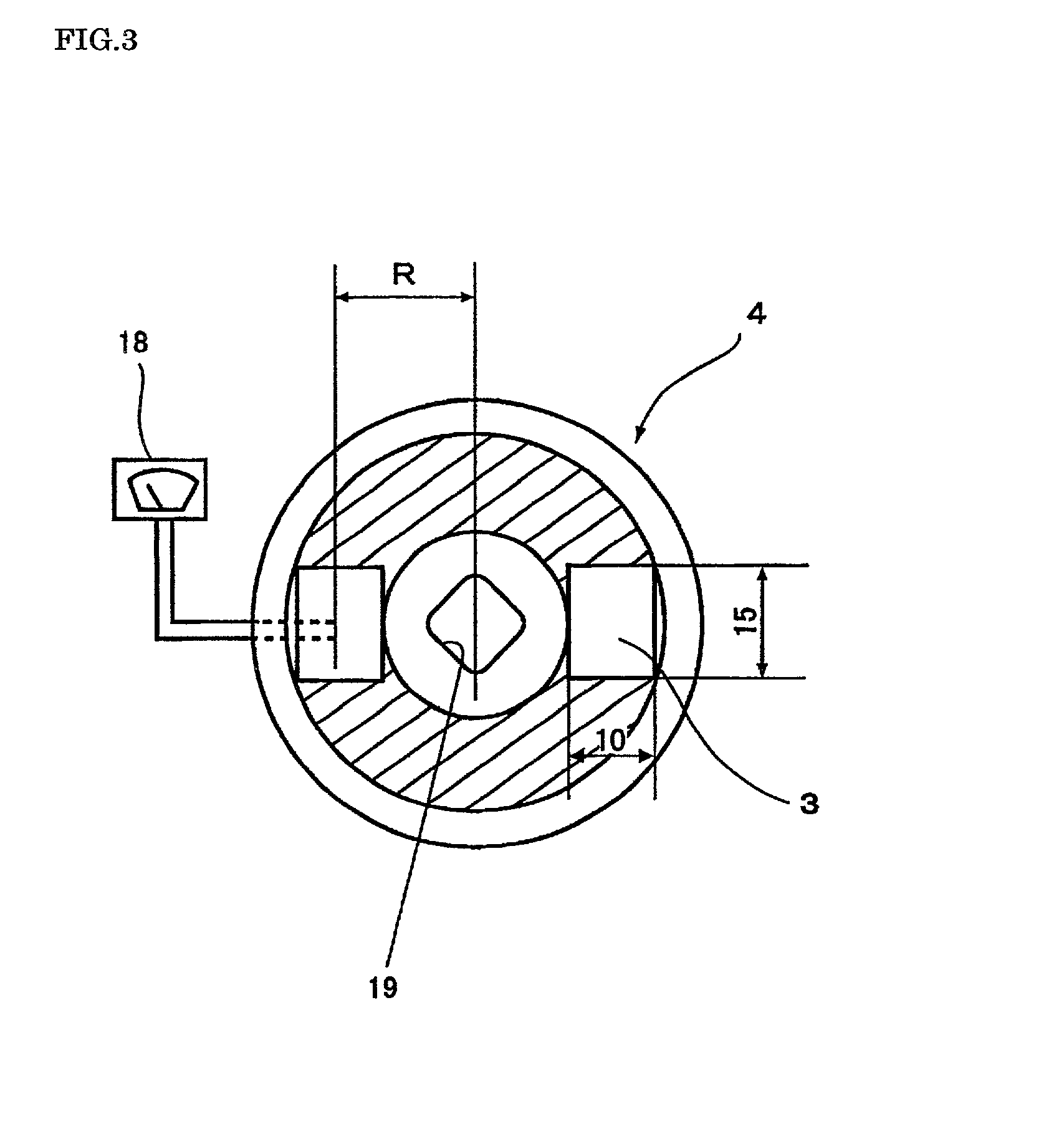Friction material
a technology of friction material and friction material, which is applied in the direction of friction lining, shaft and bearing, mechanical apparatus, etc., can solve the problems of braking vibration and a reduction in the coefficient of friction, grinding the surface of the rotor, and abnormal wear of the rotor but also of the friction material itsel
- Summary
- Abstract
- Description
- Claims
- Application Information
AI Technical Summary
Benefits of technology
Problems solved by technology
Method used
Image
Examples
Embodiment Construction
, which used an aluminosilicate fiber (CFF) having a Mohs hardness of 6, had a tendency to increase the wear of the rotor and friction material, despite a reduced added amount, in comparison with other examples that used a potassium titanate fiber having a Mohs hardness of 4 singly or in combination with slag wool having a Mohs hardness of 3.5.
[0070] An experiment was conducted to determine an optimum amount of the added inorganic fiber and metal powder. Table 3 shows the composition of the friction materials used. A metal powder having a particle diameter of 20 to 45 .mu.m was used because this range of particle diameter exhibited good results in comparison with other ranges of particle diameter shown in Table 1. Constituents other than the inorganic fiber and metal powder were used with different ratios from those shown in Table 1. The total amounts of the other constituents were maintained constant in vol % throughout the examples. The manufacturing method was the same as in the ...
PUM
| Property | Measurement | Unit |
|---|---|---|
| particle diameter | aaaaa | aaaaa |
| softening point | aaaaa | aaaaa |
| particle diameter | aaaaa | aaaaa |
Abstract
Description
Claims
Application Information
 Login to View More
Login to View More - R&D
- Intellectual Property
- Life Sciences
- Materials
- Tech Scout
- Unparalleled Data Quality
- Higher Quality Content
- 60% Fewer Hallucinations
Browse by: Latest US Patents, China's latest patents, Technical Efficacy Thesaurus, Application Domain, Technology Topic, Popular Technical Reports.
© 2025 PatSnap. All rights reserved.Legal|Privacy policy|Modern Slavery Act Transparency Statement|Sitemap|About US| Contact US: help@patsnap.com


